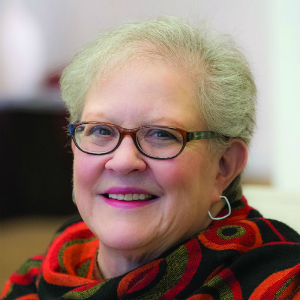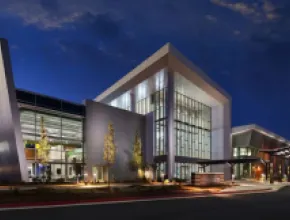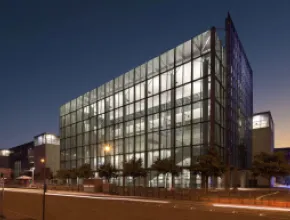1. What is the largest sized group you've taken to a conference center? Do you normally schedule in "free" time into an agenda for them to take advantage of the setting? Do you find attendees will return to session if given such time?
250 was the largest group meeting in which I've been involved that was held in a conference center. Most of those were double-occupancy. THAT said, IACC does its annual meeting at conference centers (of course!) and they have had 350+ participants. There are some centers (search at www.iacconline.org) that can accommodate many more.
My answer to the latter two parts of the question are a bit more complicated to answer: whether meetings are held at conference centers, hotels, convention centers, or in offices, I think the design needs to be more “audience-centric.” That is I think we need to give permission to those attending – and build an agenda – that has “free” or “down” time in it so people can breathe, return calls that for them may be urgent, converse (one of the reasons people attend meetings is to “network” – that is, converse and learn with – others), and yes, take advantage of the recreation. A good example from experience: years ago, a meeting I was involved in planning told people to schedule spa appointments and other recreation outside the meeting times. WHAT a mistake! After that first year, we gave people permission to use the time as they saw fit.
That won’t work for all meetings! Knowing the audience, the desired outcomes and how best to engage the audience and bring them back after a break, helps use the time, facility and environment better. And perhaps the person facilitating the after-the-break discussion, before launching into the specific content piece, can ask what people learned during their break and ask some other leading questions. Make it compelling to return!
2. Do conference centers typically work with surrounding hotels for room nights?
Yes, and non-residential (that is, meeting and eating space and no sleeping rooms) conference centers do so especially. Look at The Summit Executive Center in Chicago as an example.
If a group can use the conference center space as is and needs more guest rooms, perhaps to accommodate more single occupancy, they will work with the group to secure more rooms.
I also hope that this question wasn’t really about convention centers – the larger facilities that accommodate trade shows and, often, city-wide meetings. IF so, best to work with the DMO (aka CVB) on guest rooms.
3. In your experience, how do you think conference centers compare to most hotels with regards to meeting space cost?
It depends … of course … on the entire package (literal package – CMP – for conference centers and, with hotels, the ‘spend’ and how they allocate space.)
Some hotels are, based on room rate, expected occupancy, overall ‘spend’, willing to provide more meeting space than the formulated amount. In conference centers, space is included in the package because conference centers are designed for meetings.
One of the things to consider when comparing the two: is the space held and available for the group on a 24-hour basis? Is it solely for the group’s use or will it be used at other times for other groups? If the space is solely for the group, may they leave materials in the room overnight?
Look at all the aspects of the space and how it will be used as well as looking at potential costs.
4. With regards to temperature where you don’t have control, do you recommend that the hotel set the temperature and if so what do you typically request it to be set at?
It’s not easy to determine the temperature to use. Many say 68 or 72 and I think it depends on the weather outside, the temperature outside the meeting rooms (in corridors, pre-function space, break space), the audience and where they are from, gender, etc. One of the reasons I like conference centers is that many have individual thermostats in each meeting room which makes it easier to adjust.
5. Could Joan comment on both positive and negative impact of great (or bad) conf. center architecture on sound quality, sightlines, and "warmth" of meeting space? I sometimes encounter great looking space, but space that has functionality issues.
Until we all have input into space that is newly built and designed perfectly, we’re all using space that is either retrofitted or that was designed with what an architect and owner thought would meet the needs.
I’ve yet to experience, in any meeting space, the ”perfect” room – and part of that is that most meeting space is multi-purpose: for meetings, weddings and other social events, and more.
That said, I think two things can happen: if you are stuck with space that is not perfect for the needs of the group and/or the trainer/facilitator/presenter, figure out how to use the space you have. (“If you’re not with the one you love, love the one you’re with”!) Play with the set up and consider some alternatives – even using the space as a starting point and moving the group to other outside-the-room spaces for other discussions.
Best to be as specific as possible in the RFP and to consider all needs when looking at properties.
If this didn’t answer the question, email me with more and I’ll try again.
6. What other "surprises" can you tell us about.
Laughing! Well, good surprises are S’mores that can’t be made outside because of the rain and are put together using a crème brulee “torch” and brought in on silver platters. Good surprises are a chef willing to cook hotdogs for those who are tired of really good healthy food. (NOT that a good beef hot dog is bad!) Bad surprises are anything that cause angst .. like the boiled crawfish on the cold salmon plates with tentacles wiggling as the plates were brought into the room.
7. Joan, do Conference Centers typically have food and beverage minimums in their contracts?
Generally not or not that I’ve experienced. The pricing is based on the number of overnight and day guests and is thus packaged. Most conference centers plan 3 meals/day and continuous breaks based on a group’s count. And yes, they’ll negotiate changes.
8. When you mentioned afternoon activities and offering comfortable space for peer-to-peer conversation, do you feel adults are open to planned ice breakers or is it better to allow them to talk amongst themselves at their leisure?
Hmmmm … a bit of a tough question. If I hear the word “ice breaker” I immediately react badly. If I’m told to do something that is not what I want/like to do (I’m not crazy about walking around a room trying to instantly find someone with whatever similarity I’ve been told to find), I’m not likely to happily participate and my experience is that many don’t like that either.
That said, I think helping people get to know one another is good and having a planned exercise is important. We all have our heads buried in our electronic devices before sessions and at breaks and conversations are not flowing so easily.
My favorite one to use is three things in common, one uniqueness. Here’s how to manage it:
Have people, if they are not already at rounds or crescents, divide into groups of up to 5. (More is ok, just not optimal.)
Tell them they have 3 minutes to come up with three things they have in common that are not obvious and 1 uniqueness about each person in their group. (“Obvious” is like they all have on red, or wear glasses, or are attending that meeting! “Uniqueness” is something that the others don’t share. For example, someone may be a violin player and the others aren’t, or someone loves broccoli and the rest don’t.)
It’s safe, it always elicits laughter and even people who may have worked together for years learn something knew. It doesn’t force anyone out of their seats or make the reveal anything they don’t want to. And the individual groups can then share, with permission of the others, what they learned.
I first experienced this with Izzy Gesell (www.izzyg.com) at a conference and have used it lots.
AND give the group time, at breaks, to also talk on their own!
9. What do you suggest for the post lunch slump?
Movement of some kind. It can be perhaps a “wall-walk” to look at the flip charts from the morning and talk, or it can be tossing a small ball around and talking about insights gained in the morning. What can be awful is a dark room with a lecture!
10. With gorgeous views in a room, how do you keep the attendees focused and not daydreaming or wishing they were outside instead?
This really is a conundrum and depends on the individuals, agenda, content deliverer and so many other factors. There is good research about how distractions and daydreaming are positive – that our brains need those stimulations. Two books you might want to read is Play www.stuartbrownmd.com/ and Dan Pink’s A Whole New Mind.






